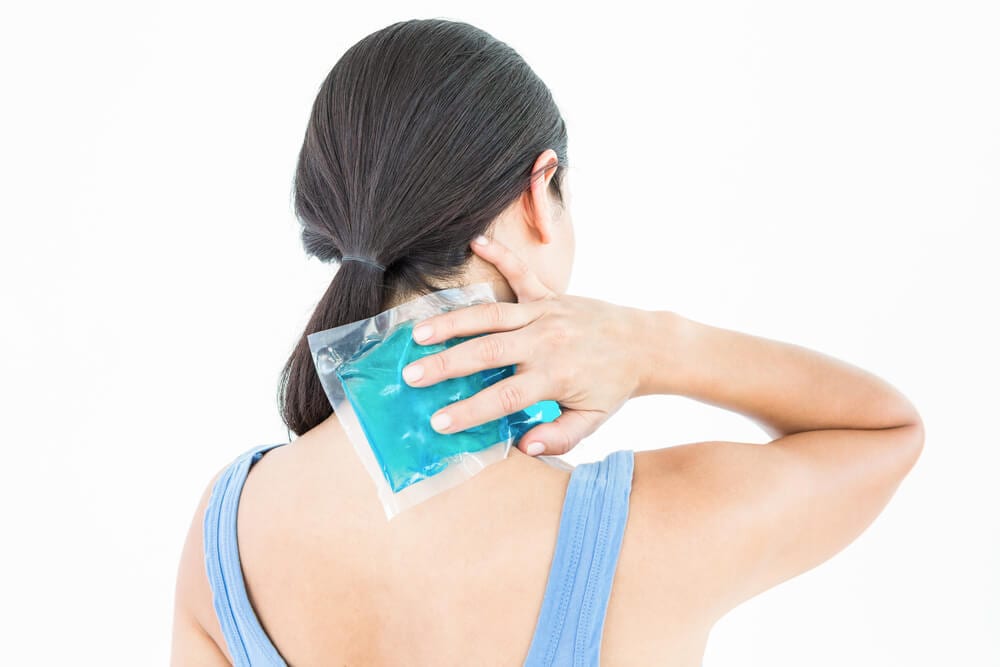The age old question of ice versus heat has been around for hundreds of years. Unfortunately, the answer is vary rarely based on solid scientific evidence.
In this article I want to share with you when ice is best and when heat is best. I will also share with you how long and how much of each you should apply, and for what conditions. I will also support each recommendation with one or two research articles.
So much of today’s health care advice is founded on personal opinion and not solid scientific evidence. The question of ice versus heat is just another area where too many personal opinions take over the discussion.
The first question I would encourage you to ask yourself is “what are you trying to accomplish?”
What do you want to achieve?
If you are looking for stress relief, body relaxation and need some relief from tension then global heat (like a hot tub, hot shower or sauna) is your best bet.
Researchers have shown that hot water therapy is helpful for conditions like fibromyalgia, some types of arthritis and many chronic pain conditions (1, 2). It has also been shown to help in your overall well being by reducing stress and anxiety (3).
Researchers vary in how long people were exposed to the hot water or sauna therapy, times from 20 minutes up to an hour. Temperatures were also varied, from 32 degrees Celsius all the way up to 60 degrees Celsius.
The higher the temperature, the shorter the duration. My recommendation is to use common sense; don’t overdo it. Most spa’s have a time recommendation, more is NOT better.
Follow the instructions and use common sense.
Sleep, depression and constipation?
Several studies looked at cold water immersion with what was called an adaptive shower. My understanding is that is a shower with your water as cold as you can make it, so it’s not “ice bath” cold but my impression is that it’s cold enough to be uncomfortable.
Researchers found two significant benefits. Anti-depression and if done before bed, better sleep effects (4,5). As a side note; the study that indicated you can sleep better after a cold shower, also found some benefit for people with colon cleansing.
So if you’re looking for natural solutions for constipation why not give a cold shower a try?
I’ve heard time frames of 2-3 minutes for these cold showers and some closer to 5 minutes. The “5 minute” time frame is generally associated with changing your shower temperature from cold to hot and then cold again (contrast showers).
Contrast showers have become popular in the athletic community for speeding up muscle recovery after an especially hard work out. There is some mounting scientific evidence to support them (7). Be advised, they are not for the faint of heart.
Local pain control.
One of the most common reasons to reach for an ice pack is after injuring yourself.
Research has shown over and over that local ice application helps with inflammation, reduces swelling and helps speed up the healing process (6).
We recommend local ice application for 8-10 minutes on smaller body areas like the neck and smaller joints like wrists and elbows. For larger areas like the lower back or hips, 18-20 minutes once an hour does the trick.
A general rule of thumb is ice locally, heat globally. Unless you’re brave enough to jump in a cold shower like the researchers recommended above.
I always recommend you have a good team.
With most health conditions, there are lots of opinions. My number one recommendation is that you follow the science AND your common sense.
Remember not all science is created equal so you need health care providers with a solid scientific background and excellent clinical skills to help you recover.
This has never been more important than in today’s health care landscape. From google, to Dr. Oz, you can get health information everywhere. The question? Is that advice based on a logical and thoughtful examination that is unique to you and your individual problems?
I personally would not move forward with any advice that is not unique to me and also based on a solid, scientific approach.
If you’re serious about getting well and doing it with as little drama as possible then we’d love to have a conversation about your health goals.
If you have any questions about the recommendations in this article then reach out to us by clicking on our contact us page and filling out the web form. [Click Here]
Our doctors and therapists take time to answer questions during our exam process and even before so you know you’re getting the right advice for you.
If you want to check our availability, then [Click Here] and fill out some personal and clinical information and you can find out when we have available appointments.
It all starts with a a logical and thoughtful examination and that’s what Lighthouse is all about. Recommendations that are unique to you, based on science and that follow a strategic plan to get you well.
1. McVeigh JG, McGaughey H, Hall M, Kane P. The effectiveness of hydrotherapy in the management of fibromyalgia syndrome: A systematic review. Rheumatol Int. 2008;29:119–30. [PubMed] 2. Matsumoto S, Shimodozono M, Etoh S, Miyata R, Kawahira K. Effects of thermal therapy combining sauna therapy and underwater exercise in patients with fibromyalgia. Complement Ther Clin Pract. 2011;17:162–6. [PubMed] 3. Robiner WN. Psychological and physical reactions to whirlpool baths. J Behav Med. 1990;13:157–73.[PubMed] 4. Shevchuk NA. Possible use of repeated cold stress for reducing fatigue in chronic fatigue syndrome: A hypothesis. Behav Brain Funct. 2007;3:55. [PMC free article] [PubMed] 5. Shevchuk NA. Hydrotherapy as a possible neuroleptic and sedative treatment. Med Hypotheses. 2008;70:230–8. [PubMed] 6. Schaser KD, Disch AC, Stover JF, Lauffer A, Bail HJ, Mittlmeier T. Prolonged superficial local cryotherapy attenuates microcirculatory impairment, regional inflammation, and muscle necrosis after closed soft tissue injury in rats. Am J Sports Med. 2007 Jan;35(1):93-102. [PubMed] 7. Versey NG, Halson SL, Dawson BT. Effect of contrast water therapy duration on recovery of running performance. Int J Sports Physiol Perform. 2012;7:130–40. [PubMed]


